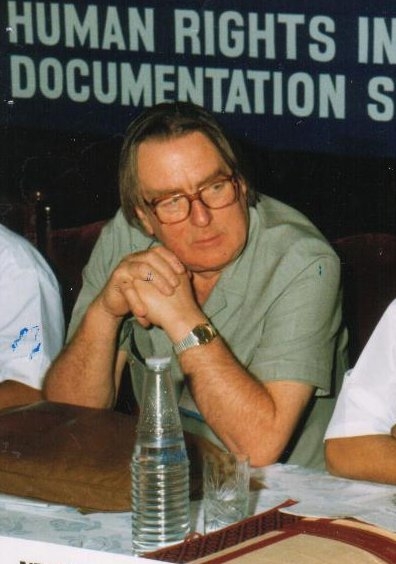HURIDOCS (Human Rights Information and Documentation Systems) launched at a time when computers weren’t widespread and human rights defenders struggled to efficiently and effectively organise their information. The world has changed dramatically since then. The human rights movement has grown, and digital technologies have opened the door for activists to discover, share and take action at unprecedented speed and scales.
The people who defend human rights today face a number of challenges in mobilising information for the cause. In some areas, there’s a flood of claims, documents and materials to sift through — but insufficient resources or know-how to tackle the task at hand. In others, information remains difficult to locate, hindered by bureaucracy or hidden away in malice. Furthermore, documentation tools aren’t always fit for purpose or designed with integration or interoperability in mind.
The circumstances have shifted over the years, but accessible information remains crucial to protecting the dignity and freedom of all people. Subsequently, HURIDOCS is as committed as ever to our mission. As the needs and realities of human rights defenders change, we will continue to evolve with them.
1979
A group of human rights movement leaders meets outside Paris to discuss how human rights defenders can take advantage of information and communication technologies that commercial companies and government agencies are developing. The group resolves to create an international network to explore this challenge, forming what will become HURIDOCS.
1982
Famed British human rights activist Martin Ennals leads HURIDOCS’s founding assembly in Strasbourg, France. More than 70 activists convene from every region of the globe. Ennals tells the assembly:
“The rapid increase of interest in human rights coincides with the rapid development of information technology. Unless a common and universal system of communication is evolved, valuable information will be wasted, existing international machinery will not function, and implementation will not be monitored.”
—Martin Ennals, HURIDOCS Founding President (1927-1991)

1980s
HURIDOCS pioneers applying information science to the field of human rights. Early milestones include building a universal terminology on how to classify and organise human rights information and developing bibliographic standards and tools.
1993
Groups based in the Global South have long asked how to successfully document human rights violations. A task force is convened of human rights defenders from the South and North, and after several years of study, testing and critique, HURIDOCS publishes the Events Standard Formats for recording relationships between perpetrator and victim. The methodology becomes the base for our software program called Evsys.
1999
The Events Standards Formats are revised, and so is their accompanying software program: HURIDOCS launches a reprogrammed application called WinEvsys to replace Evsys.
2000s
HURIDOCS contributes to the development of a “violations approach” to monitoring economic, social and cultural rights. Recognising that standard methodologies and tools do not address every need of a diverse global movement, the organisation also pilots customised capacity-building work with human rights groups.
2006
The internet makes a plethora of valuable information available to human rights defenders, but finding it with mainstream tools remains tricky. HURIDOCS launches a multilingual search engine called HuriSearch that provides a singular point of access. At the time of its retirement in 2016, HuriSearch has indexed more than 8 million web pages.
2009
HURIDOCS replaces WinEvsys with OpenEvsys, an open-source tool for documenting human rights violations. It is based on the Events Standards Formats, but boasts much more powerful features.
2010s
Sophisticated technologies like machine learning are a potential boon for activists, saving them time and energy on the more tedious tasks of documentation and information management. Working closely with human rights organisations, HURIDOCS explores ways to integrate these features.
2013
HURIDOCS introduces Casebox, an open-source solution for collaborative litigation management. By the time of its sunset in 2020, Casebox has been widely adopted within the human rights world and beyond.
2017
Documents in an online library must be meaningfully organised and contextualised for human rights defenders to find the information that they need for impact. In years prior, HURIDOCS helps two human rights partners to create tools for better access to regional case law: the African Human Rights Caselaw Analyser and the SUMMA: Inter-American Case Law Database. Based on this experience, HURIDOCS decides to launch Uwazi, a flexible open-source software for curating, annotating and sharing document collections.
2020s
HURIDOCS continues partnering with human rights organisations to help them with strategies and tools to overcome their information challenges. Our team works on expanding Uwazi to meet other human rights use cases like case management and documentation of human rights violations, previously addressed by other tools Casebox and OpenEvsys.
For more details about HURIDOCS activities moving into the future, check out our latest organisational strategy (2022-2026).